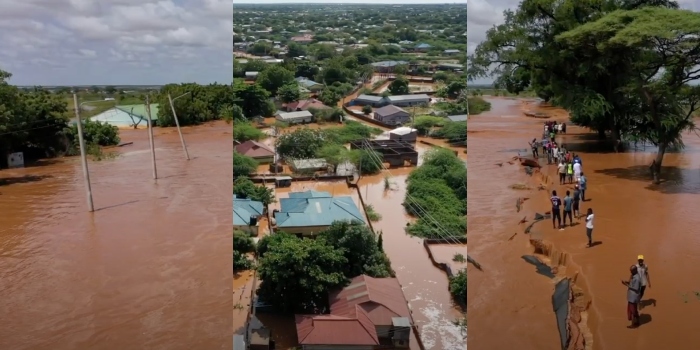Meteorological experts have gathered in Garissa County to develop advanced early warning systems aimed at mitigating flood disasters and safeguarding lives and property.
The initiative, supported by the WISER Kenya project, seeks to equip local agencies with cutting-edge forecasting tools to provide timely alerts to farmers, herders, and emergency responders.
Northern Kenya, a region frequently battered by climate extremes, has endured cycles of prolonged droughts followed by devastating flash floods.
With the climate crisis worsening, vulnerable communities face growing risks.
However, experts believe that early action, powered by accurate predictions, can significantly reduce disaster impacts.
Kennedy Thiongo, a Meteorological Officer involved in the training, explained the significance of the program.
"We are here for two days with technical teams from Garissa County to train them on flood forecasting. We’re using a hydrological model called WRF to help predict floods in advance and reduce their impact," he said.
The new system is unique in its approach, incorporating local expertise from the counties most affected by recurring disasters. By integrating advanced modelling with on-the-ground knowledge, the initiative aims to enhance the accuracy of flood forecasts across the region.
Mohammed Dubow, Garissa County’s Disaster Management Director, emphasized the importance of the training in improving community preparedness.
"This training will help us deliver accurate information to communities from the county level all the way to the sub-county," he said.
Daud Ahmed, the Red Cross Coordinator in Garissa, highlighted the shift from reactive disaster response to proactive measures.
"As stakeholders, we now understand how weather forecasting works. We have been trained to interpret and share this information with communities, helping shift from reacting to disasters to taking early, anticipatory action," he noted.
The WRF-Hydro model, a key tool in the project, is expected to revolutionise flood forecasting in northern Kenya by providing more precise and timely data.
The ultimate goal is to ensure that warnings reach those at risk in time, enabling evacuations, livestock relocation, and other preventive measures.
As climate threats intensify, initiatives like this offer hope for vulnerable communities.

